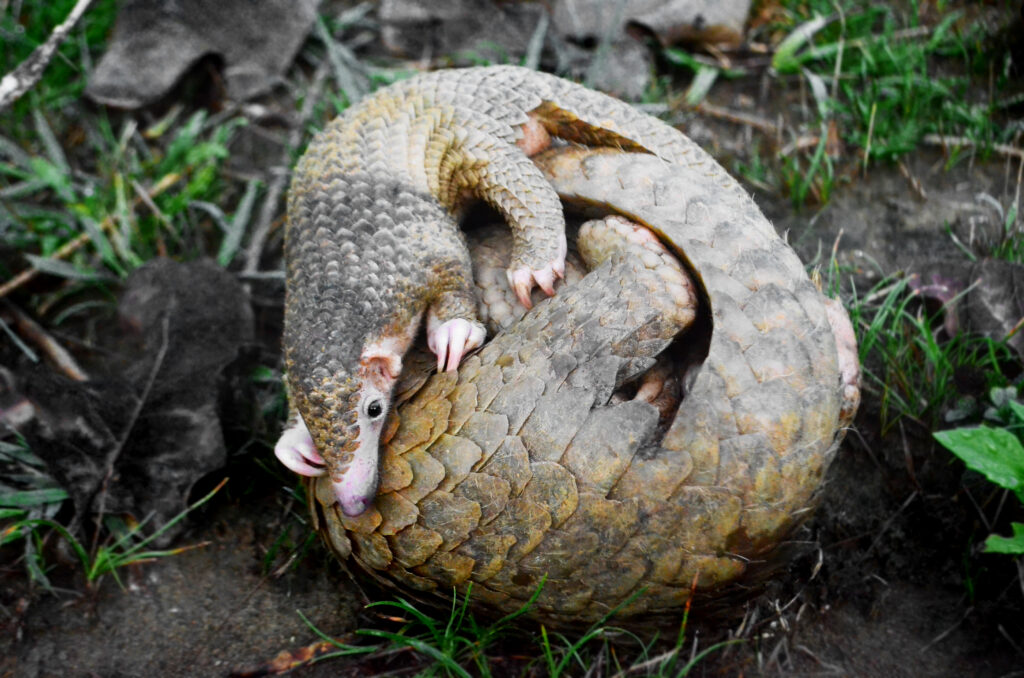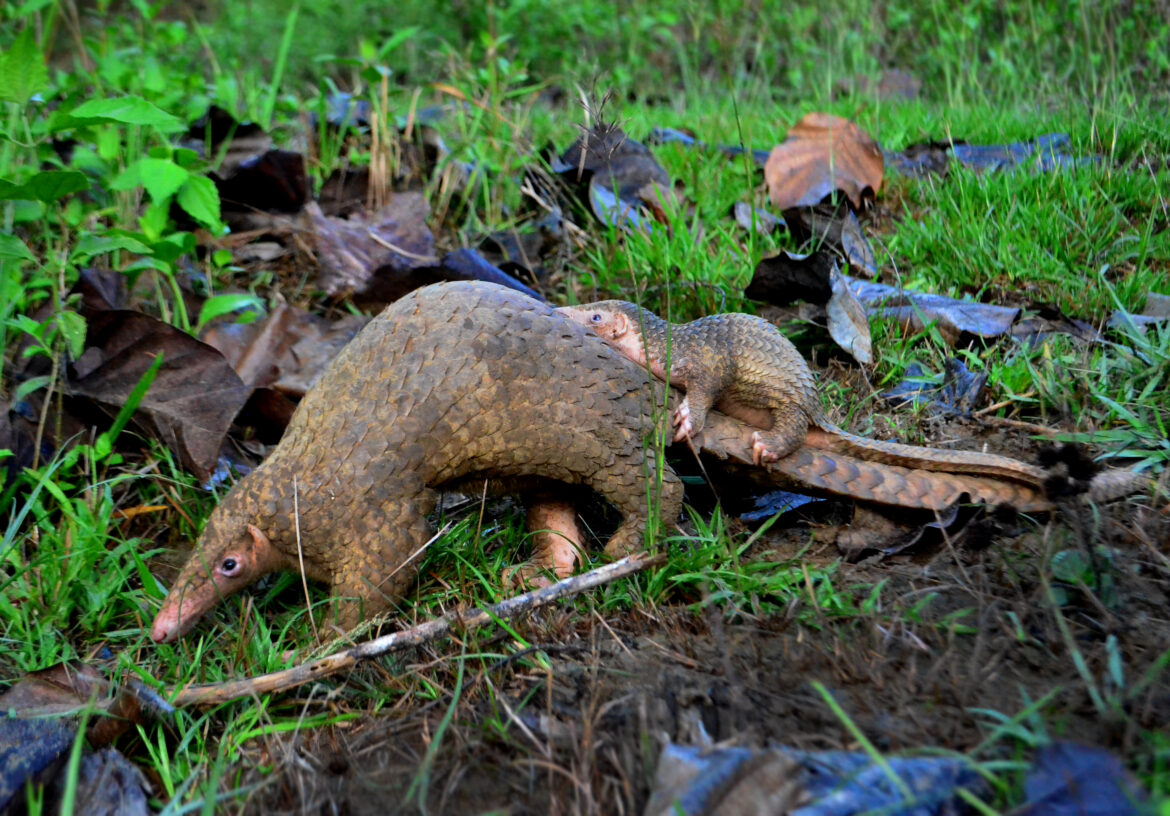Text by Henrylito D. Tacio
Photos by Gregg Yan
Pangolins, which are sometimes mistaken as reptiles but are actually scaly-skinned mammals, are in danger of going extinct if they are not protected now, according to an international organization initiated by members of the Association of Southeast Asian Nations (ASEAN).
Pangolins are prehistoric animals that have been around for 80 million years. “There are eight known species of pangolins spread across Asia and Africa,” said the Laguna-based ASEAN Centre for Biodiversity (ACB), the first regional initiative to save ASEAN’s rich but highly threatened biodiversity. “All are listed in the threatened tier of the Red List of the International Union for Conservation of Nature (IUCN).”
Africa has four species, and Asia also hosts four species. Southeast Asia is home to two species: the Sunda pangolin (scientific name: Manis javanica) and the Philippine pangolin (Manis culionensis).
“Both species are considered critically endangered,” ACB said in a statement. “Due to their elusive nature, these species are hard to find, so there is scant knowledge about their behaviors and few reliable population estimates.”
Found in Brunei Darussalam, Cambodia, Indonesia, Laos, Malaysia, Myanmar, Singapore, Thailand, and Vietnam, the Sunda pangolin covers the most geographic range in the region. The Philippine pangolin is endemic in the country, inhabiting four islands, including Palawan and Culion.
“The Philippine pangolin was only recently described as a species distinct from the Sunda pangolin,” the IUCN said. “It has the greatest number of scale rows across its back of all Asian pangolins. It can be distinguished from the Sunda pangolin by its smaller scales and a shorter head and body to tail length ratio.”
Information about the reproduction of the Philippine pangolin is still few though it is understood to be similar to that of Sunda pangolin, with one offspring born after a gestation period of between 3 and 4 months. The females reach maturity in their first year.
“Like their pangolin siblings across the world, the Sunda and Philippine pangolins have long snouts and tongues, which they use to eat ants and termites,” the ACB said. “They are mostly covered in protective scales made of keratin, the same substance that makes up hair, fingernails, and horn. These scales, unfortunately, are highly sought by poachers due to cultural beliefs that they possess medicinal properties.”

During the early months of the coronavirus disease 2019 (COVID-19) pandemic, pangolins were in the limelight following suspicions that they were among the intermediate hosts for the 2019 novel coronavirus. Although the exact origins of the pandemic still remain a mystery, studies have already determined that pangolins and bats harbor viruses related to the causative agent of COVID-19.
The word “pangolin” comes from the Malay word penggulung, which means “roller” – a characteristic of how pangolins behave when they feel threatened – rolling up into a ball. “Against poachers and hunters, this defense mechanism has unfortunately become the species’ vulnerability, as they become easy to pick up once they roll up into balls,” ACB lamented.
In fact, pangolins are considered as the world’s most trafficked mammals. “More than one million pangolins were brutally murdered for black-market trade in the past 10 years: that is, 11 pangolins every hour,” says The Nature Conservancy.
“Every part of the pangolin has some value in trade: its meat consumed and its scales used in traditional medicine,” said Nosrat Ravichandran, a protected area specialist of the ACB.
Despite a lack of evidence suggesting they’re effective, pangolin scales are used as an ingredient in traditional Asian medicine to cure ailments ranging from asthma and psoriasis to cancer and to improve blood circulation.
“(Pangolins) are also threatened by habitat loss and fragmentation, which causes them to be easily accessible to poachers,” Ravichandran said.
In the Philippines, forests comprised more than half (54%) of the country’s total land area of 30 million hectares in 1934. In 2010, the forest cover had gone down to 23% or about 6.8 million hectares, according to a report compiled by the Senate Economic Planning Office (SEPO).
Some available records showed that at least 895,000 pangolins from Asia and Africa have been trafficked internationally from the beginning of the millennium up to 2020.
“The ASEAN region continues to be a critical hotspot for pangolins, being reported as a source, transit and destination of its trafficking,” ACB Executive Director Dr. Theresa Mundita S. Lim deplored.
An estimated equivalent of 7,634 Philippine pangolins was documented to have been seized from illegal trade and trafficking between 2000 to 2019, according to TRAFFIC, an organization established in 1976 as a wildlife trade monitoring network to undertake data collection, analysis, and provision of recommendations to inform decision making on wildlife trade.
Aside from these confiscations, 2,870 frozen Sunda pangolins, weighing over 10 tons, were discovered in a Chinese boat that crashed into a protected coral reef at the Tubbataha national marine park in 2013.
“All trade in the four Asian species of pangolin has been illegal since 2002 but the appetite of Chinese consumers for its meat, prized as a delicacy, and its scales, believed to benefit breast-feeding mothers, has virtually wiped out the creatures in China, Vietnam, Laos, and Cambodia,” wrote The Guardian’s Damian Carrington. “Pangolin traders, who use dogs or traps to capture the wild animals, have since moved into their last habitats in Java, Sumatra and the Malaysian peninsula, driving populations down but prices up.”
The ACB described pangolins as “little guardians of forests.” It added: “Shy, slow-moving, and mainly nocturnal. They live in forests and grasslands, finding tree hollows or digging deep burrows to sleep and rest in.”
“Pangolins are very important in the whole ecosystem that we have,” tweeted Sir David Attenborough during World Pangolin Day 2022. “If you lose pangolins, you upset all sorts of things but the sheer humanity of not looking after such a beautiful gentle animal as a pangolin breaks my heart.”
Pangolins can eat more than 70 million insects a year. “As predators of ants and termites, pangolins perform an important ecosystem service by contributing to the regulation of insect populations,” states the book, Biodiversity of World: Conservation from Genes to Landscapes.
“An adult pangolin weighing 3 kilograms can consume more than 3 grams of termites in one meal,” says The Nature Conservancy. “Thanks to their big appetite, one pangolin can protect an area as large as 31 football fields from termite destruction.”
Researchers at Ohio State University claim billions of dollars are spent annually on repairing termite damage and treating and preventing infestations.
By excavating burrows, pangolins likely affect soil processes, including turnover of organic matter and aeration. “This improves the nutrient quality of the soil and aids the decomposition cycle, providing a healthy substrate for lush vegetation to grow from,” pangolins.org’s Sarah Pappin wrote.
When abandoned, the underground burrows also provide habitat for other animals.
Pangolins are prey for threatened species like tigers, lions, and chimpanzees.
Despite all this importance, pangolins are being threatened. “Daily, we are inching closer and closer to losing pangolins forever,” Pappin reminds.

